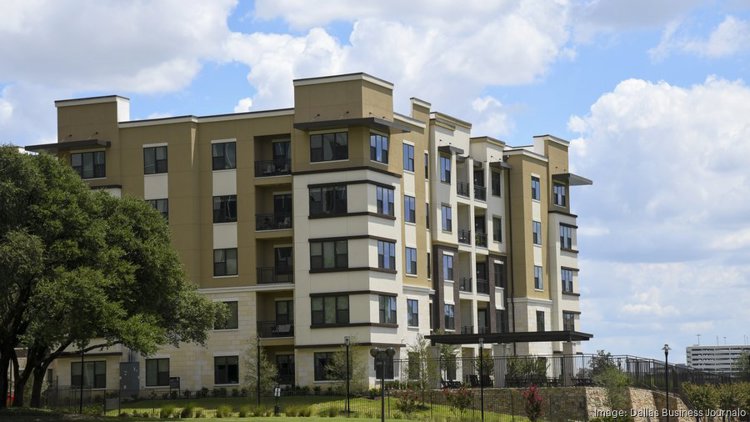DALLAS — Read this story and more North Texas business news from our partners at the Dallas Business Journal
Demand for Dallas-Fort Worth apartments has been higher than typical for the first months of the year after a long string of falling monthly rates, but the good deals for renters may be coming to a close.
Apartment dwellers filled just over 5,000 units in the first quarter, making it the busiest first quarter since 2019, exempting 2021 when pent-up demand and relocations put the apartment market into overdrive, according to a new analysis from CoStar Group researchers.
The firm's research now shows tiny month-over-month gains in the region's asking rents over the first four months of 2024, the first increases since June 2023. Rental rates declined for six consecutive months in the back half of 2023, a relief for renters after prices soared at double-digit percent paces in the years prior.
CoStar places Dallas-Fort Worth just behind New York City in apartment demand over the past year, both filling around 19,000 units.
"As we continue through the end of [the second quarter], I expect that difference to narrow and will push Dallas-Fort Worth to the top spot," said Bill Kitchens, a real estate analyst for CoStar in Dallas-Fort Worth.
Kitchens ties the influx in demand to the easing of inflation and the improvement of consumer sentiment over the past year, as well as concessions and specials given by landlords competing for tenants.
Kitchens said three fast-growing suburban submarkets — the Frisco and Prosper area, the Allen and McKinney area and North Fort Worth — have accounted for a third of market demand over the past year and have been a stabilizing force for the market, though now the Frisco and Prosper area is seeing the steepest rent declines in the market.
Demand from mid- to low-income households have pulled back the most, Kitchens said, adding that rent growth is softening even in areas without a saturation of new communities that create competition and weaken rents.
"We’ve seen negative performance shift to mid-priced units," Kitchens said. "That has not happened since the great financial crisis."
Separate research from Institutional Property Advisors, a division of Marcus and Millichap, showed a similar trend in leasing as CoStar. Its research found record figures for first-quarter leasing for the first three months of the year, with net absorption of 7,000 units in Dallas-Fort Worth and 100,000 nationally.
Data sources can differ based on whether they account for newly built apartment units when a property opens or if they add those units gradually as they become available.
"Healthy job production and solid in-migration are key factors supporting housing demand locally," said Greg Willett, first vice president of research services for Institutional Property Advisors. "Rentals are capturing an usually large share of total housing demand, because the premium to buy versus rent is at an all-time high."
Rent growth remains negative on an annual basis, down 1.4% over the past year, though prices remain extremely elevated compared to pre-pandemic levels. Monthly asking rents currently average $1,528 in DFW, or $1,343 for a one-bedroom apartment and $1,719 for a two-bedroom, per CoStar data.
As demand picks up in the busier spring months, the real estate data company forecasts rents in DFW will continue to rise through the end of the year. CoStar expects prices to be flat on an annual basis and grow by about 3% annually beginning next year.
A slowdown in the region's rapid pace of apartment construction could push rents further. RealPage chief economist Carl Whitaker expects apartment deliveries to peak by the end of this year or early next year at around 38,000 units, the Dallas Morning News reported.



